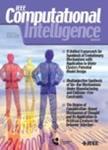版权所有:内蒙古大学图书馆 技术提供:维普资讯• 智图
内蒙古自治区呼和浩特市赛罕区大学西街235号 邮编: 010021

作者机构:Ericsson Res Kyrkslatt Finland
出 版 物:《IEEE COMPUTATIONAL INTELLIGENCE MAGAZINE》 (IEEE计算智能杂志)
年 卷 期:2019年第14卷第4期
页 面:65-+页
核心收录:
学科分类:0808[工学-电气工程] 08[工学] 0812[工学-计算机科学与技术(可授工学、理学学位)]
主 题:Artificial intelligence Biological system modeling Computational modeling Data models Internet of Things Interoperability Machine intelligence
摘 要:Machine Intelligence (MI) technologies have revolutionized the design and applications of computational intelligence systems, by introducing remarkable scientific and technological enhancements across domains. MI can improve Internet of Things (IoT) in several ways, such as optimizing the management of large volumes of data or improving automation and transmission in large-scale IoT deployments. When considering MI in the IoT context, MI services deployment must account for the latency demands and network bandwidth requirements. To this extent, moving the intelligence towards the IoT end-device aims to address such requirements and introduces the notion of Distributed MI (D-MI) also in the IoT context. However, current D-MI deployments are limited by the lack of MI interoperability. Currently, the intelligence is tightly bound to the application that exploits it, limiting the provisioning of that specific intelligence service to additional applications. The objective of this article is to propose a novel approach to cope with such constraints. It focuses on decoupling the intelligence from the application by revising the traditional device s stack and introducing an intelligence layer that provides services to the overlying application layer. This paradigm aims to provide final users with more control and accessibility of intelligence services by boosting providers incentives to develop solutions that could theoretically reach any device. Based on the definition of this emerging paradigm, we explore several aspects related to the intelligence distribution and its impact in the whole MI ecosystem.